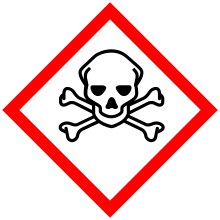**Definition and Terminology**:
– Poison is defined as harmful substances causing harm at the molecular level.
– It differs from toxins and venoms, with venom being actively delivered and poison being passively delivered.
– Poison and venom are both toxins produced by organisms.
– Paracelsus stated that everything is poison, and only the dose makes a thing not a poison.
– Poison is colloquially used to describe various harmful substances like corrosive substances, carcinogens, mutagens, teratogens, and pollutants.
– In nuclear physics, a poison obstructs or inhibits a nuclear reaction.
– The term ‘poison’ originated around 1200 from Old French meaning a deadly drink.
**Uses and Impact**:
– Many sectors use poisonous substances for purposes other than toxicity, essential in industries like agriculture and cleaning.
– Pesticides target pests and their toxicity is regulated due to environmental impact.
– Bioaccumulation of pesticides poses risks to various species.
– Poison entering the food chain can concentrate in predators.
– Pollution includes widely dispersed poisons in the environment.
**Poisoning and Management**:
– Poisoning can be acute or chronic, caused by natural or synthetic substances.
– Acute poisoning occurs from a single exposure, while chronic poisoning results from long-term exposure.
– Management includes ensuring cardiopulmonary function, treating symptoms, and decontamination methods like activated charcoal and gastric lavage.
– Elimination of poison can be enhanced using various methods like diuresis, hemodialysis, and chelation.
– In 2010, poisoning caused about 180,000 deaths globally.
**Historical References and Uses**:
– Throughout history, poison has been used for murder, pest-control, suicide, and execution.
– Monarchs in Medieval Europe used food tasters to prevent royal assassination.
– Arsenic, once nicknamed ‘inheritance powder,’ was a common poison.
– Poison has been used in warfare and as a magical agent.
– The figurative use of the term ‘poison’ dates back to the late 15th century.
**Miscellaneous and Statistics**:
– Mortality statistics show that poisoning caused about 180,000 deaths in 2010.
– Poisonous compounds are utilized for their toxicity or other chemical properties in industry and agriculture.
– Examples include carbon monoxide, methanol, and sodium cyanide.
– Historical references include Kautilya’s strategies and the distinction between poison and venom.
– Miscellaneous information includes silver toxicity, types of poisons, and external links for further reading.
This article may need to be rewritten to comply with Wikipedia's quality standards. (January 2022) |
A poison is any chemical substance that is harmful or lethal to living organisms. The term is used in a wide range of scientific fields and industries, where it is often specifically defined. It may also be applied colloquially or figuratively, with a broad sense.

Whether something is considered a poison or not may depend on the amount, the circumstances, and what living things are present. Poisoning could be accidental or deliberate, and if the cause can be identified there may be ways to neutralise the effects or minimise the symptoms.
In biology, a poison is a chemical substance causing death, injury or harm to organisms or their parts. In medicine, poisons are a kind of toxin that are delivered passively, not actively. In industry the term may be negative, something to be removed to make a thing safe, or positive, an agent to limit unwanted pests. In ecological terms, poisons introduced into the environment can later cause unwanted effects elsewhere, or in other parts of the food chain.
